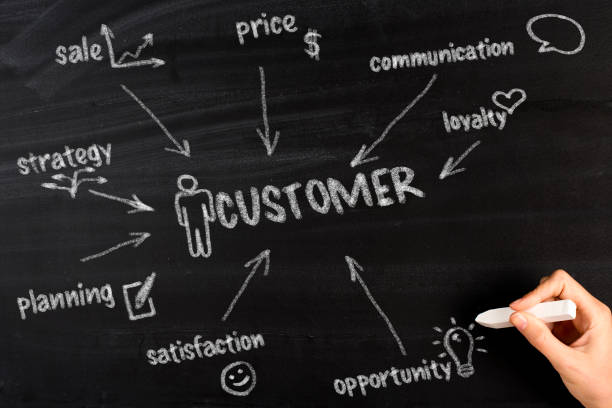In part 1 I established the critical importance of ensuring that your product discovery efforts are aligned with the organization’s strategy, platform capabilities and marketing and sales structure go-to-market. In part 2 I turn to the “process” of customer discovery, but from a unique perspective. Much has been written on the process of discovery and the usefulness of proposing a hypothesis about customer needs, stating your assumptions, asking good questions and then evaluating and refining your hypothesis based on iterative customer interaction. An excellent resource for developing an understanding of the discovery process in general is the Silicon Valley Product Group blog: https://svpg.com/ In this post I will focus on specific challenges in formulating hypotheses in the context of content-based products for learning and research and the challenges that follow in customer discovery. With content-based products two intertwined concerns need to be addressed before a testable hypothesis can be generated: 1. Prevailing and possible business models and 2. Publisher relationships.
Prevailing and Possible Business Models:
In part three of my series on developing a content licensing strategy: https://parkerthepublisher.com/tag/content-licensing-series/ I describe the prevailing business models available for distributing content into the higher education library and this is a useful place to begin if a review of business models is useful. At the broadest level the customer begins with single title delivery models or aggregated delivery models (meaning many thousands of titles packaged together). Next the customer is presented with a choice between subscription or life-of-file/perpetual access and different purchasing models highlighted by outright purchase, evidence-based access (pick your titles to own based on usage data) and demand-driven access (title ownership triggered by content usage).
These many options and models should be considered by the product manager as a bare canvas is considered by the painter. The painter begins with known colors but then moves to combine and isolate these many colors to create a unique expression. Exceptional product managers come to the customer discovery process with an understanding of known business models and the direction of growth or decline in the uptake of these many models. Further, the product manager will have a developed sense of how different customer segments react to these models. For example, a demand-driven purchasing preference versus a subscription aggregation preference may prevail in the largest of libraries versus very small institutions. This developed sense of existing business models and the growth or decline across the broader market of these many models will inform the product managers conceptualization of new business models to test as hypotheses in customer discovery.
In late 2015 our product team at Alexander Street began a prolonged exploration into the possibility of producing a subscription aggregation business model that also supported limited and selective ownership of highly sought after or heavily used video titles. We had previously introduced evidence-based acquisition as well as single-title life-of-file sales options in our video store. But could we bring these models together? In the end we developed several hypotheses we tested with our customer base, our advisory board and customers not using Alexander Street video products. The result was “Build-by-Choice,” a subscription benefit that delivered selected single-title ownership as a function of the subscription price. The key take-away is this new business model emerged from a deep understanding of prevailing business models and informed a thoughtful customer discovery process rooted in the possible. Of course this also required a reasonable assumption that our publishing partners would support this new business model.
Publisher Relationships:
A higher education platform distribution business is nothing without content partners, publishers and specialized distributors. There will be content available from hundreds and often more than a thousand unique publishers in an eBook or video aggregation for example. The product manager conceiving of new business models and new products and engaging in customer discovery must have a sense of what these content partners will expect in terms of economic return and what limits they will support in terms of digital rights management and unpaid access. Unpaid access can take the form of free preview before purchasing or unpaid usage in terms of viewers or time on page before a purchase is triggered. In any event, your publisher partners’ tolerance for access and acquisition to their content must be part of hypothesis formulation. Perhaps this should go without saying but I have seen and indeed myself felt the pull of customer need moving a product concept in the direction of a business model many publishers would most probably not support.
The very best product managers active in the space of building content-enabled products for higher education library consumption are in frequent discussion with publishing partners. And not just those publishers commanding the majority of sales and revenue through the platform, but rather a strategic mix of partners representing different risk tolerance levels, different genres of content important to the library customer and in partnerships with key competitors. In part three of this series I will turn to the Publisher and Distributor discovery process, which unfolds after sufficient hypothesis testing in customer discovery has revealed a potentially winning product solution. But it is critical that the perspective of the publisher has informed the customer discovery process. In the end, a new product delivered to the higher education library market will only succeed if it solves a problem for the customer within business terms and access rules that publishers and distributors will accept.
Please subscribe to get a simple notification when new posts publish. I invite you to read the complete series here: New Product Development for Content-Based Products.
If you want to work together on your new product development strategy, contact me directly.
Published by: on
Read more about: Licensing, New Product Development Process
Photo by Free Images iStock Getty Images
